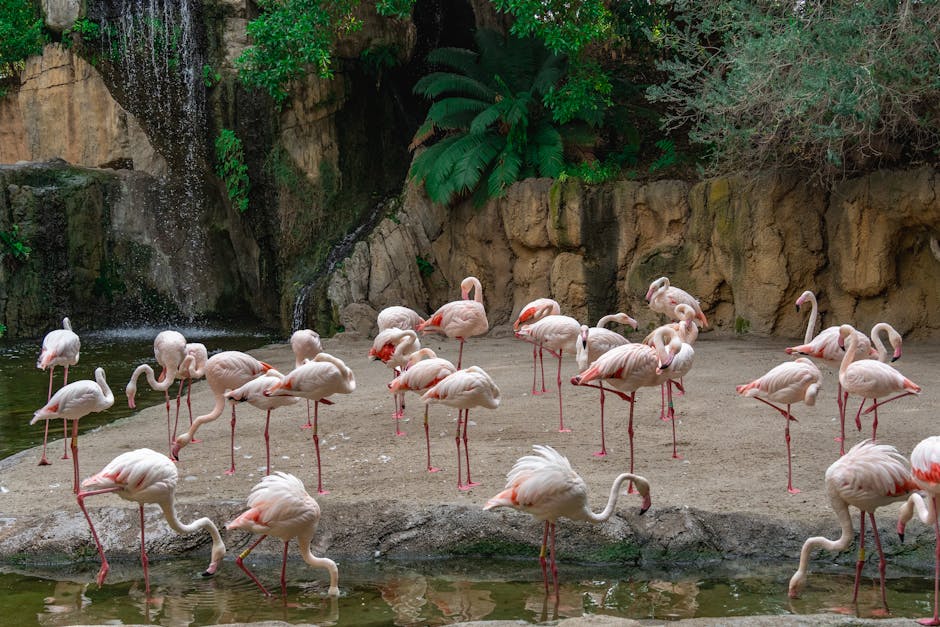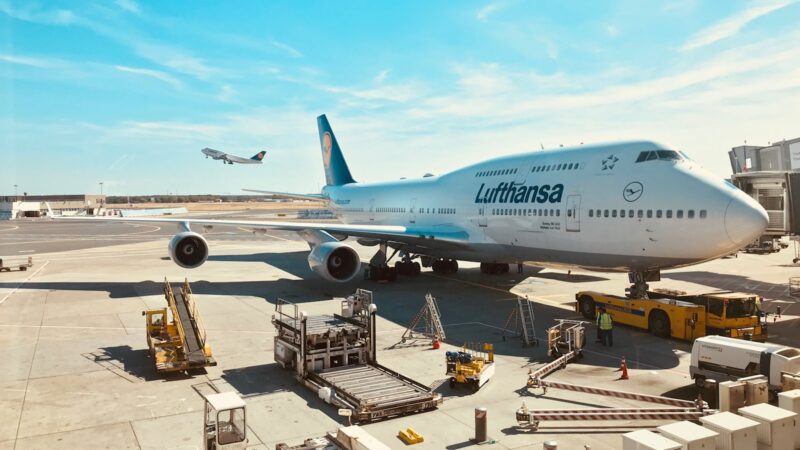How many zoos are in the us? This may surprise you, but there are approximately 500 zoological facilities across the country, with 439 dedicated zoos. When it comes to accreditation, about 236 zoos are recognized for meeting higher standards of care and operations.
Zoos in the United States offer a window into the wild, merging education, entertainment, and conservation in one. They provide an opportunity to see animals up close, inspiring awe and fostering a deeper understanding of wildlife and ecosystems. The role of zoos has evolved dramatically over the years. Beyond merely displaying exotic animals, reputable zoos today emphasize global conservation efforts and captive breeding programs, aiming to protect endangered species and educate the public about the natural world.
I’m Gabrielle Reese VT, and my experience in exploring how many zoos are in the us has been quite enriching. As a traveler and educator, sharing insights about these fascinating establishments allows me to connect curious explorers with nature.
Table of Contents
ToggleHow Many Zoos Are in the US?
When we talk about how many zoos are in the US, the numbers can be quite surprising. As of the most recent data, there are around 500 zoological facilities in the country. This broad category includes not only traditional zoos but also aquariums, safari parks, and other types of animal centers.
Out of these, 439 are dedicated zoos. These are places where you can find a wide variety of animals, from lions to lemurs, all housed in environments that aim to mimic their natural habitats. The focus is not just on entertainment but also on education and conservation.
A significant portion of these zoos, 236 to be exact, are accredited by the Association of Zoos and Aquariums (AZA). Accreditation is a big deal. It means a zoo meets high standards for animal care, education, and conservation. These accredited zoos are leaders in conservation efforts, participating in programs like the Species Survival Plan.
Additionally, there are 357 businesses that combine both zoos and aquariums. These facilities offer a mix of land and marine wildlife, providing visitors with a unique experience of both worlds. Think of places like the San Diego Zoo, which also operates an impressive safari park.
Zoos in the US are more than just places to see animals. They are centers for learning and conservation. They help protect endangered species and educate millions of visitors each year about the importance of wildlife and ecosystems. The next time you visit a zoo, remember there’s a lot more going on behind the scenes than meets the eye.
Top States with the Most Zoos
When it comes to how many zoos are in the US, some states stand out with a larger number of these fascinating places. Let’s take a closer look at the top states with the most zoos.
Florida
Florida tops the list with an impressive 31 zoos. Known for its sunny weather and diverse wildlife, Florida offers plenty of opportunities for animal lovers. Miami alone boasts four zoos, including the famous Zoo Miami and Jungle Island. Tampa isn’t far behind, with three zoos of its own. This makes Florida a prime destination for anyone looking to explore multiple zoos in a single trip.
Texas
Texas, the Lone Star State, is home to 26 zoos. With its vast landscapes, Texas provides a perfect backdrop for a wide range of animal habitats. From the busy city of Houston to the cultural hub of Austin, Texas zoos offer something for everyone. Many of these zoos focus not just on exotic animals but also on native Texan wildlife, giving visitors a unique perspective on the state’s natural heritage.
California
California, known for its diverse ecosystems, hosts 25 zoos. From the world-renowned San Diego Zoo to the Los Angeles Zoo, California offers a rich variety of animal encounters. Each zoo provides a unique experience, whether it’s a focus on conservation, education, or simply enjoying a day out in nature. California’s zoos are leaders in innovation, often setting trends for zoos around the world.
Wisconsin
Wisconsin might not be the first state you think of when it comes to zoos, but it has 22 zoos to explore. The city of Wisconsin Dells is particularly notable, with three zoos packed with family-friendly attractions. Wisconsin’s zoos often highlight the state’s own wildlife, making them an educational stop for anyone interested in the region’s natural history.
New York
Rounding out the list is New York, with 20 zoos spread across the state. New York City alone is home to five zoos, each located in a different borough. From the Bronx Zoo to the Central Park Zoo, these urban animal centers offer a glimpse into wildlife conservation amidst the hustle and bustle of city life. New York’s zoos are not just about showcasing animals; they’re about educating visitors on global conservation efforts.
These states represent the heart of America’s zoological community, each offering unique experiences and contributing to the broader goals of conservation and education. Whether you’re in the sunny south or the busy northeast, there’s a zoo waiting to welcome you.
Types of Zoos in the US
Zoos in the United States come in various shapes and sizes, each offering unique experiences. Here’s a closer look at the different types of zoos you can explore:
Safari Parks
Safari parks bring the trip of an African safari right to the U.S. Visitors drive through large, open habitats where animals roam freely. This setup allows for close encounters with animals like giraffes, zebras, and lions. Texas is home to several safari parks, such as Natural Bridge Wildlife Ranch in New Braunfels. These parks offer an immersive experience, making you feel as if you’re part of the wild.
Wildlife Sanctuaries
Wildlife sanctuaries focus on the rescue and rehabilitation of animals. Unlike traditional zoos, they often house animals that cannot return to the wild due to injury or other factors. Sanctuaries prioritize animal welfare and conservation. For example, The Elephant Sanctuary in Hohenwald, Tennessee, provides a peaceful home for retired elephants.
Aviaries and Butterfly Houses
Aviaries and butterfly houses are dedicated to showcasing birds and butterflies in naturalistic environments. These facilities often feature walk-through exhibits where visitors can observe these creatures up close. Tracy Aviary in Salt Lake City is a prime example, offering educational programs about bird conservation. Butterfly houses, like those found in botanical gardens, provide a serene experience surrounded by fluttering wings.
Reptile Centers
Reptile centers are a haven for fans of snakes, lizards, and other cold-blooded creatures. These specialized zoos focus on the conservation and education of reptiles and amphibians. Edisto Island Serpentarium in South Carolina is one such center, offering live shows and exhibits that highlight the fascinating world of reptiles.
Petting Zoos
Petting zoos are perfect for families with young children. They allow visitors to interact with domesticated animals like goats, sheep, and rabbits. These zoos provide a hands-on learning experience and are often found in urban and rural settings alike. Old MacDonald’s Farm in Rapid City, South Dakota, is a popular choice for a fun day out with the kids.
Animal Theme Parks
Animal theme parks combine the thrill of amusement rides with the wonder of wildlife exhibits. These parks offer entertainment alongside education, making them a hit with visitors of all ages. Florida is a hotspot for animal theme parks, including Busch Gardens Tampa Bay, where you can enjoy roller coasters and animal encounters in one place.
Each type of zoo offers a unique way to connect with nature and learn about the importance of conservation. Whether you’re seeking trip, education, or simply a day out with family, there’s a zoo type that caters to your interests.
The Role of Zoos in Conservation and Education
Zoos play a crucial role in conservation and education. They are not just places to see animals but also centers for learning and preserving wildlife.
Conservation Efforts
Zoos are at the forefront of conservation efforts. They work tirelessly to protect endangered species and their habitats. A key initiative is the Species Survival Plan® (SSP), which manages the breeding of endangered species to ensure genetic diversity. There are nearly 500 SSP programs that focus on species like the Amur leopard and the Sumatran tiger.
In 2022, zoos spent over $252 million on field conservation projects in 119 countries. They supported 232 species that are listed as Endangered or Threatened under the U.S. Endangered Species Act. This financial commitment highlights their dedication to saving animals from extinction.
Education Programs
Education is a cornerstone of zoo missions. Zoos offer a variety of programs to teach visitors about wildlife and conservation. In 2023, AZA members reported more than 2,263 education programs, reaching over 76 million people. These programs include field trips, outreach, and resources for K-12 students.
Zoos also provide professional development for teachers, reaching more than 45,000 educators with curriculum resources and planning visits. This helps teachers bring real-world conservation issues into the classroom.
AZA Statistics
The Association of Zoos and Aquariums (AZA) is a leader in setting standards for zoos. There are 213 accredited facilities in the U.S., which includes 134 zoos and 59 aquariums. These facilities are home to over 780,000 animals and 8,600 species.
The AZA also supports conservation through the AZA Conservation Grants Fund, which has provided over $8.7 million to more than 470 projects since 1991.
Zoos are not just about showcasing animals; they are vital for conservation and education. Through their efforts, they help protect species, educate the public, and inspire a love for nature.
Frequently Asked Questions about Zoos in the US
What state has the most zoos?
Florida leads the pack with the highest number of zoos in the United States. The Sunshine State boasts 31 zoos, including a variety of animal theme parks, jungles, and museums. Miami, a vibrant city in Florida, is home to four of these zoos, offering diverse wildlife experiences in a single location. Tampa follows closely with three zoos, making it another hotspot for animal lovers.
How many zoos are in the United States in 2024?
In 2024, there are 236 accredited zoos across the United States. These zoos meet high standards of animal care and contribute significantly to conservation efforts. Collectively, they draw approximately 183 million visitors annually, making them a major attraction for families and wildlife enthusiasts. These zoos are part of a broader network of 439 zoological facilities that include various types of animal exhibits.
How many zoos are in the world today?
Globally, there are around 10,000 zoos, according to the American Zoo and Aquarium Association. These institutions range from small local zoos to large, well-known facilities that house a vast array of species. They play a crucial role in global conservation efforts, education, and providing visitors with the opportunity to connect with wildlife from around the world.
Conclusion
In wrapping up our exploration of how many zoos are in the US, it’s clear that these institutions are more than just places to see exotic animals. They are vital hubs for conservation, education, and community engagement. With 236 accredited zoos and a total of 439 zoological facilities, the United States offers diverse opportunities for people to learn about and connect with wildlife.
Zoos play an essential role in conservation efforts by participating in programs like the Species Survival Plan, which helps protect endangered species. They also provide educational programs that inspire future generations to care about wildlife and the environment. The fact that these zoos attract over 183 million visitors annually highlights their importance in society.
At Versed Traveler, we believe in the value of ethical and well-managed zoos. They not only support conservation but also enrich the lives of visitors by offering unique experiences that foster a love for nature. As you plan your next trip, consider visiting a zoo to witness the incredible diversity of life and learn more about the crucial conservation work being done to protect it.













